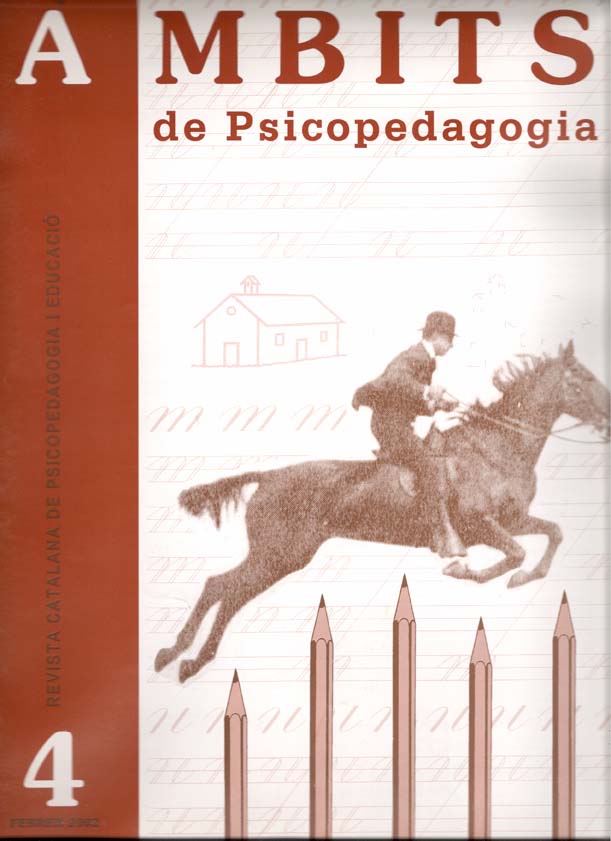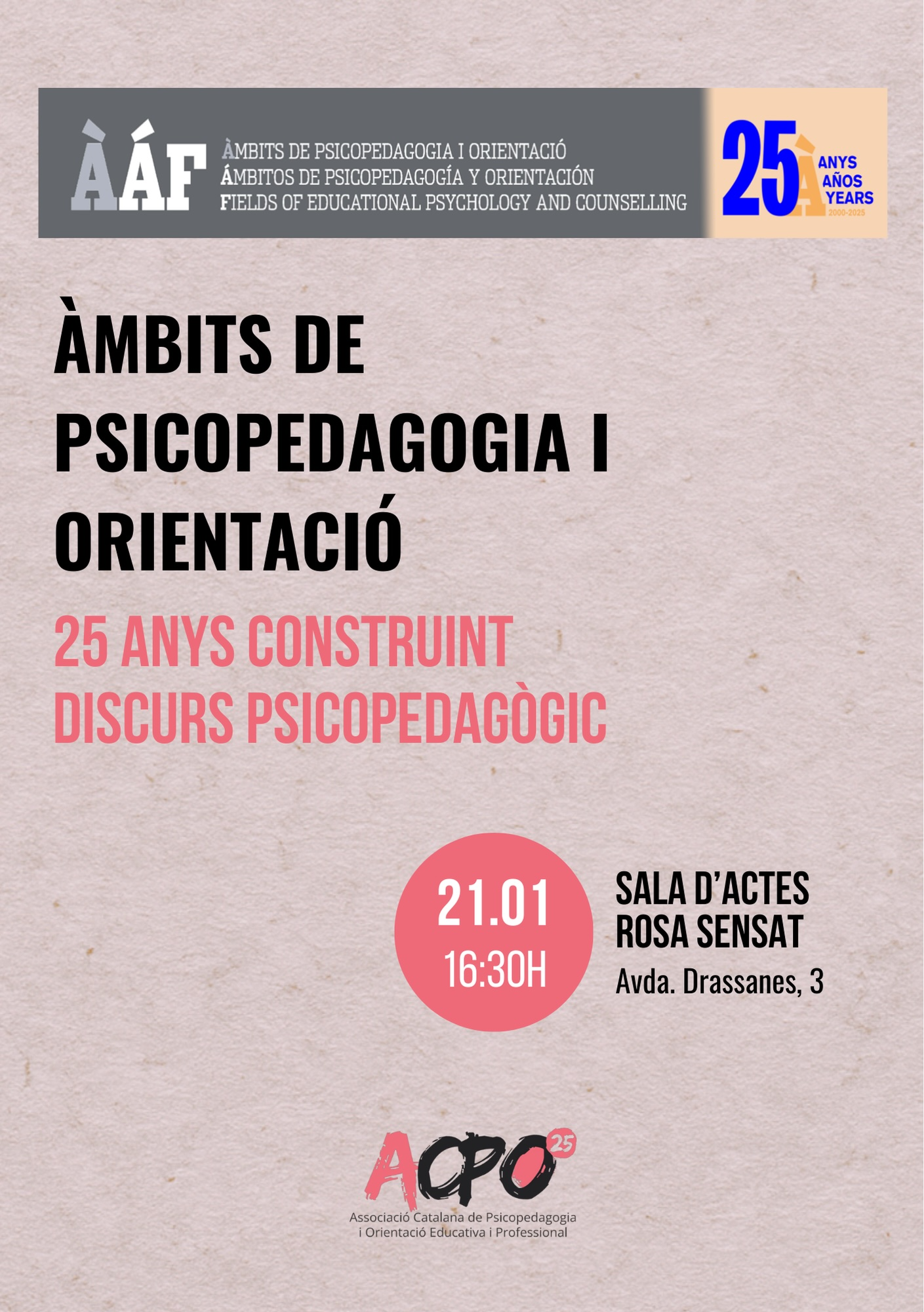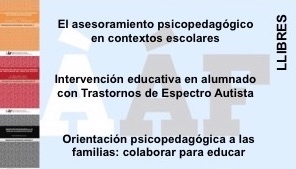La violència ente iguals a l'escola: el Bullying
Resum
.
Referències
Craig, W.M. (1998). The relationship among bullying, victimization, depression, anxiety and agression in elementary school children. Personality and Individual Differences, 24, pp. 123-130
Crick, N.R. and Bigbee, M.A. (1998). Relational and overt fors of peer victimization: A multiinformand aproach. Journal of Consulting and Clinical Psychology, 66, 337-347.
Espelage, D., Asidao, C.S., and Vion, S. (1999). APA’s 1999 Annual Convention, aug 20-24 Boston. http://apa.org/monitor/oct99/cf3.html
Farrington, D.P. (1993). Understanding and preventing bullying. In Crime and Justice. Vol 17, M. Tonry (Ed.). Chicago: University Chicago Press, pp. 381-458.
Hodges, E.V.E. and Perry, D.G. (Fall, 1996) Victimization is never just child's play. National School Safety Center News Journal, 4-7.
Kaltiala-Heino, R., Rimpelä, M., Rantanen, P., and Rimpelä, A. (2000). Bullying at school-an indicator of adolescents at risk for mental disorders. Journal of Adolescence, 23, 661-674.
Kumpulainen, K., Räsänen, E., Henttonen, I. (1999). Children involved in bullying: psychological disturbance and the persistence of the involvement. Child Abuse and Neglect, 23, pp. 1253-1262.
Kumpulainen, K., Räsänen, E., Henttonen, I., Almqvist, F., Kresanov, K., Linna, S.L., Moilanen, I., Piha, J., Purra, K., and Tamminen, T. (1998). Bullying and psychiatric symptoms among elementary school-age children. Child Abuse and Neglect, 22, pp. 705-717.
Olweus, D., (1983). Low school achievement and agressive behaviour in adolescent boys. En D. Magnusson y V. Allen (Eds.). Human development. An interactional perspective. New York: Academic Press, pp. 353-365.
Ortega, R. (1992). Relaciones interpersonales en la educación. El problema de la violencia escolar en el siglo que viene. Revista de Educación y Cultura, 14, pp. 23-26.
Pope, A. (2000) www.aboutourkids.org/articles/bullies.html
Wolke, D., Woods, S., Bloomfield, L., and Karstadt, L. (2000). The association between Direct and Relational Bullying and Behaviour Problems among Primary School Children. J. Child Psychol. Psychiat. Vol 41, no. 8, pp. 989-1002.
Crick, N.R. and Bigbee, M.A. (1998). Relational and overt fors of peer victimization: A multiinformand aproach. Journal of Consulting and Clinical Psychology, 66, 337-347.
Espelage, D., Asidao, C.S., and Vion, S. (1999). APA’s 1999 Annual Convention, aug 20-24 Boston. http://apa.org/monitor/oct99/cf3.html
Farrington, D.P. (1993). Understanding and preventing bullying. In Crime and Justice. Vol 17, M. Tonry (Ed.). Chicago: University Chicago Press, pp. 381-458.
Hodges, E.V.E. and Perry, D.G. (Fall, 1996) Victimization is never just child's play. National School Safety Center News Journal, 4-7.
Kaltiala-Heino, R., Rimpelä, M., Rantanen, P., and Rimpelä, A. (2000). Bullying at school-an indicator of adolescents at risk for mental disorders. Journal of Adolescence, 23, 661-674.
Kumpulainen, K., Räsänen, E., Henttonen, I. (1999). Children involved in bullying: psychological disturbance and the persistence of the involvement. Child Abuse and Neglect, 23, pp. 1253-1262.
Kumpulainen, K., Räsänen, E., Henttonen, I., Almqvist, F., Kresanov, K., Linna, S.L., Moilanen, I., Piha, J., Purra, K., and Tamminen, T. (1998). Bullying and psychiatric symptoms among elementary school-age children. Child Abuse and Neglect, 22, pp. 705-717.
Olweus, D., (1983). Low school achievement and agressive behaviour in adolescent boys. En D. Magnusson y V. Allen (Eds.). Human development. An interactional perspective. New York: Academic Press, pp. 353-365.
Ortega, R. (1992). Relaciones interpersonales en la educación. El problema de la violencia escolar en el siglo que viene. Revista de Educación y Cultura, 14, pp. 23-26.
Pope, A. (2000) www.aboutourkids.org/articles/bullies.html
Wolke, D., Woods, S., Bloomfield, L., and Karstadt, L. (2000). The association between Direct and Relational Bullying and Behaviour Problems among Primary School Children. J. Child Psychol. Psychiat. Vol 41, no. 8, pp. 989-1002.
Descàrregues
Publicades
15.02.2002
Número
Secció
Psicopedagogia i Orientació
Llicència
Els autors/ores conserven els drets d'autor i concedeixen a la revista el dret de primera publicació de l'obra, registrada sota una llicència Creative Commons Reconeixement-NoComercial-Sense Obra Derivada. Aquesta llicència permet la descàrrega de les obres, i que es puguin compartir amb altres sempre que se’n reconegui l'autoria, però no permet que siguin modificades de cap manera, ni ser utilitzades amb finalitat comercial.

















